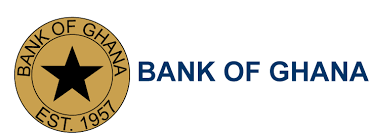The number of jobs advertised in selected print and online media, which partially gauges labour demand in the economy, increased in October 2022 relative to what was observed in the corresponding period a year ago.
Recent statistics from Ghana’s Central Bank, the Bank of Ghana, showed that a total of 3,055 job adverts were recorded in the first month of the fourth quarter (Q4) as compared with 2,734 for the same period in 2021, indicating an increase of 11.7 percent on a year-on-year basis.
There was also an appreciable rise in labour demand in the country between September and October this year. On a month-on-month basis, the number of job vacancies in October 2022 went up by 17.0 percent from the 2,611 jobs advertised in September 2022, according to the labour markets indicators.
Despite the improvements observed on the year-on-year and month-on-month bases, advertised jobs plummeted overall, between January and October, 2022.

“Cumulatively, for the first ten months of 2022, the total number of advertised jobs declined by 9.5 percent to 26,595 from 29,380 recorded during the same period in 2021.”
Bank of Ghana
The Bank of Ghana explained that the Daily Graphic newspaper was used to represent print media because it is the most widely circulated daily while online media represents job adverts posted on the websites of the 10 main online job advertising/employment companies in Ghana.
Employment conditions worsen
Regarding Private Sector Pension Contributions, the Bank of Ghana noted that total number of private sector SSNIT contributors, which partially gauges employment conditions, declined marginally to 881,139 in September 2022 compared with 881,325 for the same period in 2021.
In percentage terms, this means that employment conditions worsened marginally by 0.02 percent on a year-on-year basis in October, 2022.
Likewise, on a month-on-month basis, total number of private sector SSNIT contributors decreased by 3.8 percent from the 915,582 individuals recorded in August 2022.
However, in Cumulative terms, for the first three quarters of 2022, the Bank of Ghana disclosed that the total number of private sector contributors increased by 8.5 percent to 8,411,419 from 7,750,950 recorded over the corresponding period in 2021.
Despite a strong GDP growth of 4.8% in the second quarter of 2022, recent high frequency indicators point to some slowdown in the economy. The Bank of Ghana’s Composite Index of Economic Activity (CIEA) contracted by 1.2 percent year-on-year in the third quarter, reflecting weakened consumption, trade, and construction activities.
Both business and consumer sentiments continue to soften and remain below potential levels, reflecting rising cost of living, high input cost and significant uncertainty. All these factors weighed heavily on businesses and affected their ability to employ more workers as reflected in the statistics presented by the Bank of Ghana.
Despite these trends, the Bank of Ghana assured that private sector credit growth, in real terms, remains relatively strong and provides scope for the real sector to continue on the path of sustaining a positive outlook for economic activity.
READ ALSO: NPP’s Chances of Winning The next Elections Are being Hampered by the President – Dr. Amoako Baah






















